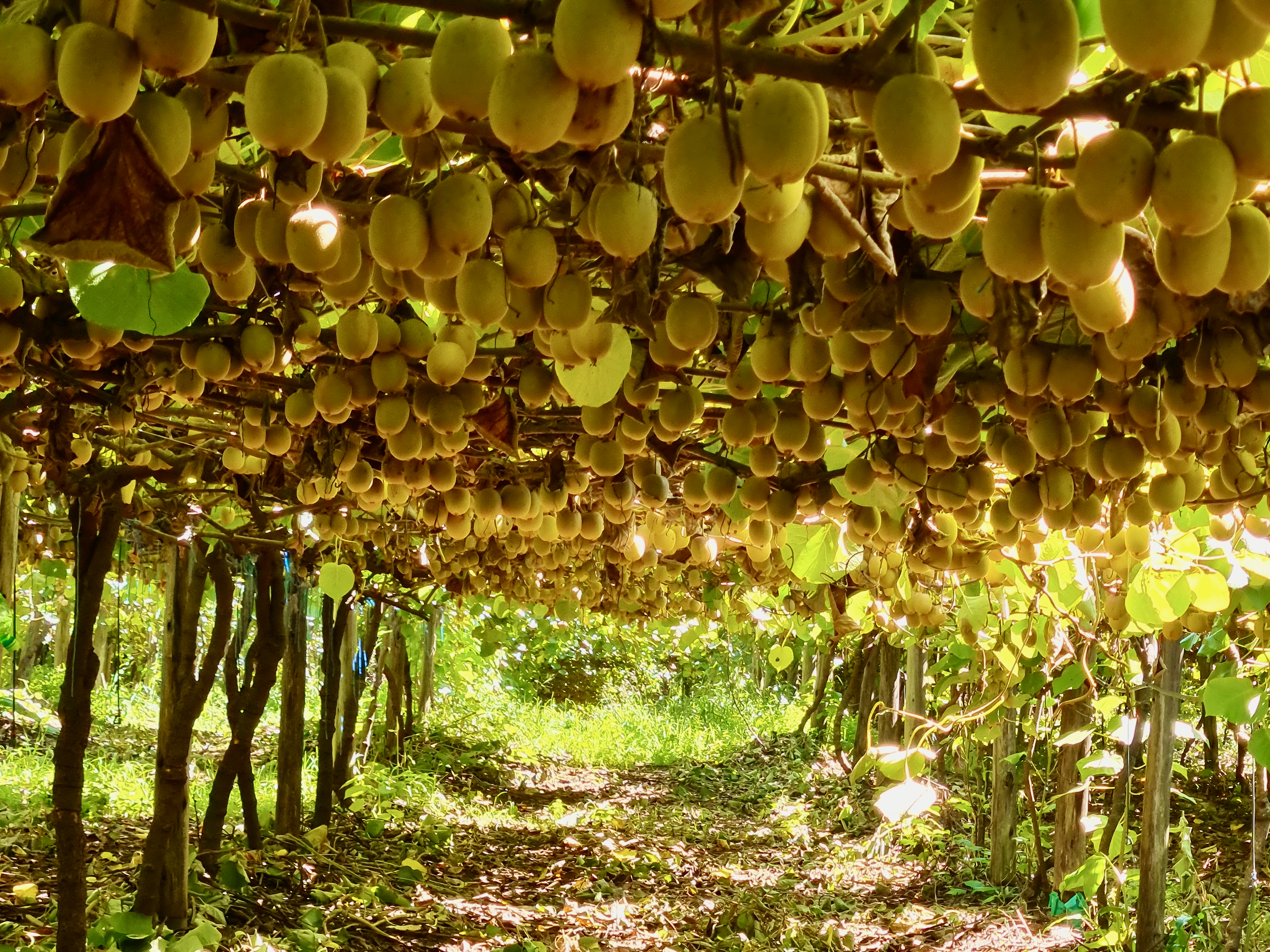The 40 determined farmers growing kiwi fruit in South Africa – some of whom have soldiered on for many years in this micro industry – are beginning to believe in a rejuvenated industry with the introduction of new kiwi varieties more suited to this country’s climate.
If prospects go as expected over the five-to-10-year period, the not-yet-500ha industry has the potential to grow up to 2,000 to 3,000ha, says Peter Turner, director for SA Kiwi Pollen (SAKP), the licence holder of Soreli kiwis in South Africa.
SAKP was established in 2014 to provide pollen for local kiwi growers and for export. Now, says Turner, there is even more of an impetus for more farmers to add kiwi to their apple and pear businesses.
The kiwi industry was initially built on the green kiwi, which has high chilling requirements – not ideal for South Africa’s environment that does not provide the kind of cold, wet winters needed for kiwi production.
The new varieties are the lower-chilling golden or yellow kiwis, which show good potential on local soil. There is also a thrust towards the red kiwi variety. Golden kiwis, which are sweeter and less acidic than the green varieties, were introduced around 2014.
 Peter Turner, director for SA Kiwi Pollen. (Photo: Supplied)
Peter Turner, director for SA Kiwi Pollen. (Photo: Supplied)
Adaptable
An eight-year proof-of-concept in areas including Mpumalanga, Limpopo and Western Cape, as well as some areas in KwaZulu-Natal, shows greater sustainable returns and that the varieties are adaptable to more areas, although still not significant plantings in comparison with other agricultural sectors.
“Proof-of-concept [comprises] consistent year-on-year increase in yields, sound arrival on exports, good return prices and favourable demand from receivers,” Turner says.
Over a seven-year period, 150ha of the yellow-fleshed Soreli kiwi were established. If outcomes like this continue, the industry – a net importer of 90% of its kiwis – will have opportunities for greater exports, self-sufficiency and job creation.
This also depends on developments in the global industry, Turner says.
The excitement unfolding is a first since the 1980s, when kiwis were sent to South Africa from New Zealand, a primary producer of the fruit aside from China, the homeland of the fruit.
In the 1980s, pollination issues and farmers planting in areas that were too hot, meant tonnages were not enough and the industry never really got going.
The local kiwi industry remains a micro industry compared with the 100,000ha citrus industry and the 25,000ha apple industry. But, says Turner, new pollinators, new management techniques and new varieties mean the industry has “started to see greater success”.
Jonathan Trusler, chairperson of the SA Kiwi Growers’ Association, cautions that although there is genuine excitement in the industry, a lot of risk is still involved because the industry is so young.
More research is needed to mitigate the risk factors, he says, acknowledging that things may not go well for new growers.
“It is difficult to know right now if growers who are failing are doing so because of climate or if they have neglected something as a grower,” says Trusler.
Once in full production and things go well, kiwi orchards should be able to achieve 30 to 40 tonnes per hectare in a season, he says.
 Women harvest gold kiwi fruit at Roselands Farm near Richmond in KZN. (Photo: Supplied)
Women harvest gold kiwi fruit at Roselands Farm near Richmond in KZN. (Photo: Supplied)
‘Johnny-come-lately competitor’
Developments in the global industry also place South Africa opportunely. Turner refers to the local kiwi industry as a “Johnny-come-lately competitor”, which has surprisingly placed South Africa in favour.
In the past five years, the global industry has shed close to 12,000ha of productive capacity (particularly in Chile and Italy) as two diseases, PSA and Moria, have affected kiwi crops.
South Africa is one of the few areas where these diseases are unknown, thanks to diligent quarantine measures placed on plant material coming from outside its borders.
“The 12,000ha that are no longer productive are going to be around for a little longer to come, and that gives space and opportunity for [local] growers to do the job right,” says Turner.
He believes this global challenge provides an opportunity to “reverse engineer a Zespri”, a dominant marketing company in New Zealand, which purchases about 35% to 40% of its fruit from Italy, Greece and France.
The idea is to have northern hemisphere industries partner with local growers to supply the counter-season fruits, Turner says.
There is also a greater demand for kiwi in Europe, and South Africa has an earlier window to export than New Zealand by four weeks.
“But we should focus more on building quality kiwi fruits and high production to compete,” Trusler adds, since the window may not last.
Jack Randle, a grower from Weltevreden Farm in Grabouw, says his kiwi production makes more money than apples when compared by hectare.
His kiwi orchard, planted in the 1990s, farms primarily green kiwis but is also trialling four different yellow kiwi varieties.
“Trials of new yellow varieties are going well. My favourite is the Jinyan [cultivar], that’s sizing very well – one of the most important factors.”
Gerhard Pretorius, from De Vos Landgoed farm in George, planted his orchards in 2018: “We have managed to harvest our second crop this year. We will hopefully be in full production in two years.” DM168
This story first appeared in our weekly Daily Maverick 168 newspaper, which is available countrywide for R25.




 Women harvest gold kiwifruit at Roselands Farm near Richmond in KZN. (Photo: Supplied)
Women harvest gold kiwifruit at Roselands Farm near Richmond in KZN. (Photo: Supplied) 